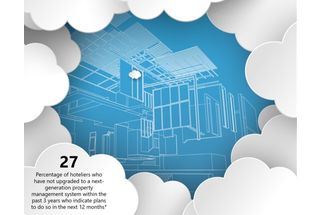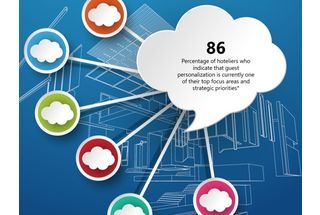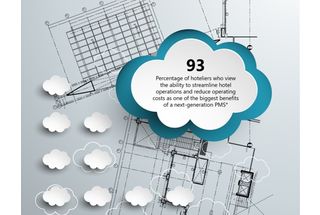Hotel Technology Success Means Connecting Solutions and Integrating Data




Note: The following article is adapted from the groundbreaking study "Built for the Cloud: A Blueprint for Hotel Technology Success" (now available for complimentary access):
"Data is the new oil" has become a common refrain — one that resonates strongly in the context of hotel performance improvement.
To compete efficiently and effectively in today's environment, hoteliers need to get their data houses in order. The problem is that relevant data typically resides in many different silos. In the pursuit of advancing their technology capabilities, hotels have tended to proliferate standalone platforms, function-specific modules and guest-facing apps.
The end result oftentimes is an ungovernable mass of data spaghetti.
This creates an assortment of problems. One problem is the inability to create a 360-degree view across the business or a unified view of guest relationships in totality. Another problem relates to data drift, which is the idea that a copy made of the data will become stale almost immediately. The nature of hotel data is such that it needs to be continuously synchronized to keep from becoming outdated.
This speaks to the need for a next-generation cloud property management system. The system needs to balance agility and decentralization with governance and centralization of data assets. Simply put, hoteliers need access to a single version of the truth. That means stitching together all of the data silos through the creation of a cloud-based centralized data repository.
No longer a pipe dream, the grand movement to unify the disparate and fragmented technologies and data silos across an enterprise has become an achievable goal with the advent of a next-generation platform built natively for the cloud.
At last, hoteliers can connect and seamlessly share data in the cloud across all parts of the property or properties and across all of the various hospitality solutions. PMS interface connections make it possible to manage virtually all crucial functions, from inbound reservation delivery from the central reservations system (CSR) or channel manager to the revenue management solution to the point of sale (POS) system to the guest response platform to the CRM and guest loyalty applications.
With a next-generation platform, a hotel can increase vascularity across all functions and operations. That means flowing all relevant guest data streams into the centralized repository where the data then becomes readily accessible on an anytime, anywhere basis. The ability to combine all hotel data in a single place in the cloud — by either physically migrating the data or by virtually connecting it to legacy systems through APIs, is a critical development in the annuls of hospitality technology and performance improvement.
Hoteliers are acutely aware of the need for technology connectivity, integration and openness, even if they haven't yet made the transition to a next-generation platform built natively for the cloud. According to recent research conducted by Starfleet Research, 91 percent of hoteliers "agree" or "strongly agree" that technology platform interoperability is a key success factor for hotel performance improvement. That means deploying a cloud platform that is as open as possible with bi-directional APIs.
Cloud connectivity eliminates disparate solutions and fractioned data, making the system as a whole smarter. Cloud connectivity also opens the door to new innovations, such as real-time optimized pricing, which can have a direct material impact on RevPAR. Finally, cloud connectivity sets the stage for future capabilities that may not yet be available or even imagined or invented.
One thing is sure: A platform built natively for the cloud gives hotels a distinct and formidable competitive advantage over those that lack the same level of technology connectivity and data integration.
This is also true with respect to OTAs, which have no visibility whatsoever into guest transaction activity or behavior inside a hotel property. An OTA cannot capture, analyze and act upon hotel guest data. It cannot glean insights into which spa treatments a guest prefers, for example, or how much money that same guest spends in the hotel restaurants. It cannot launch a campaign with specific promotional offers based on a knowledge and understanding of guest preferences.
Only a hotel has the ability to capture interaction and transaction data at every touch point and create a unified view of guest behavior. Only a hotel can leverage that data to deliver a high level of customized experiences. Done right, those experiences should translate into increased guest satisfaction and loyalty.
Note: This article is adapted from "Built for the Cloud: A Blueprint for Hotel Technology Success" (now available for complimentary access; click here to learn more).
About Starfleet Research
Every year, Starfleet Research, the IT market research arm of Starfleet Media, benchmarks best practices in technology-enabled business initiatives across thousands of hotels and resorts around the world. Starfleet Media also now publishes Hotel Technology News and Restaurant Technology News. To learn more, and to access the latest Smart Decision Guides, co-branded eBooks and other resources, please visit starfleetresearch.com